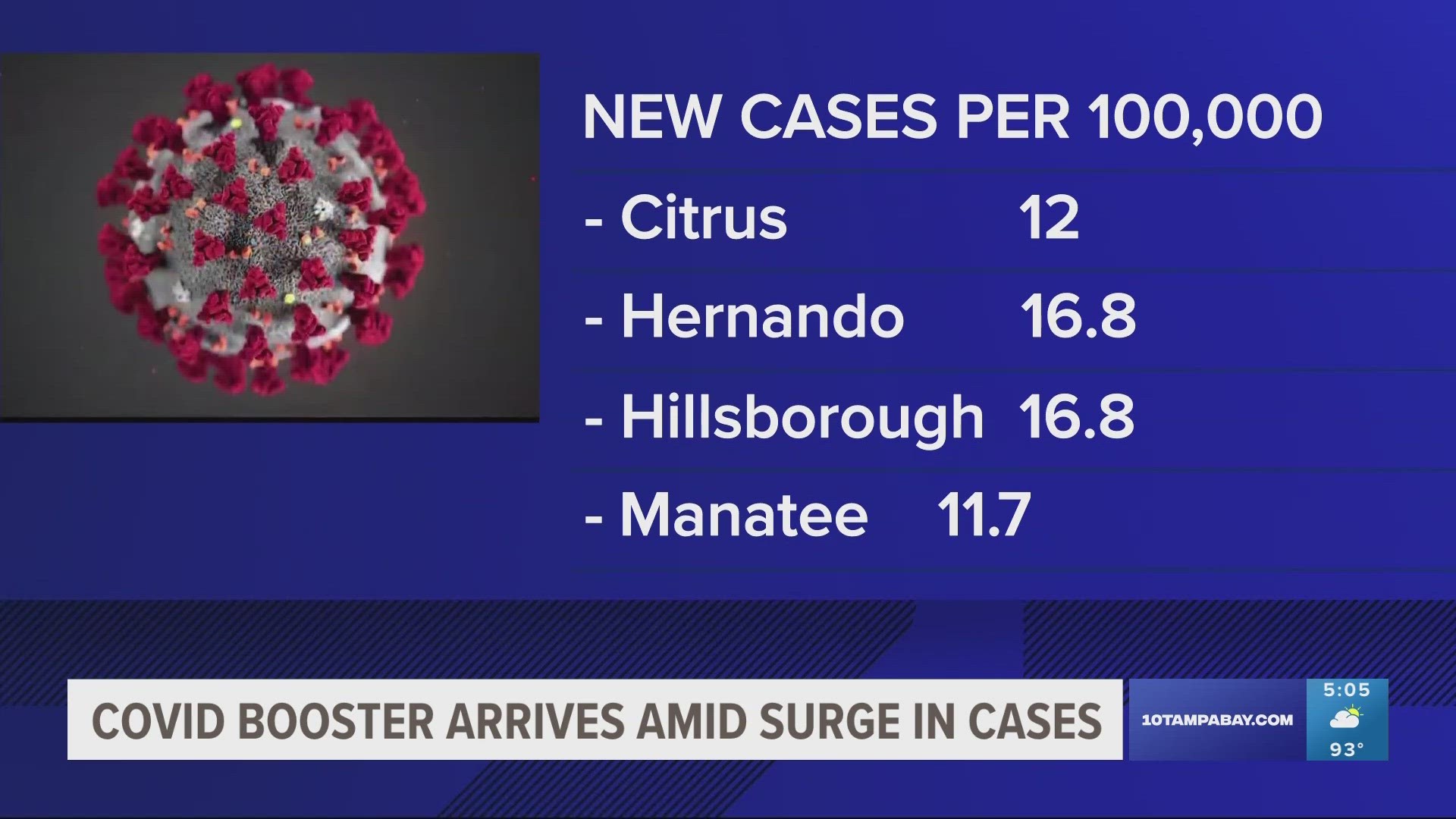FLORIDA, USA — As the latest COVID-19 vaccine booster is being released in the U.S., COVID cases and hospitalizations have been increasing in Florida over the past two months. Doctors around the world have been monitoring the latest variants closely as rising cases have triggered talks of a possible fall surge.
At the moment, while hospitalizations have risen, reportedly few patients have suffered from severe complications, and hospitals have not reported being overrun by COVID cases.
But data has shown that the new coronavirus variants are easier to spread than past variants, and patients who are immunocompromised, have heart or lung disease, or are over the age of 60 face a real risk of developing severe infections from the virus, even if they have been vaccinated or infected in the past.
With this in mind, here's a look at the dominant strains of COVID that appear to be fueling the rise in new cases and what symptoms have been reported:
EG.5 or 'Eris'
The so-called "Eris" subvariant, EG. 5, has been the dominant strain of COVID-19 since at least August. At the time, the World Health Organization deemed it similar to the other variants of Omicron in terms of severity but noted that it could be more transmissible and able to dodge immune response than its predecessors.
A pediatric infectious disease specialist interviewed by the magazine "Health" said the patients she saw had symptoms similar to past Omicron variants. These included:
- Sore throat
- Cough
- Congestion
- Runny nose
She also said some of her patients initially thought they had allergies due to the nature of the symptoms.
FL 1.5.1 or 'Fornax'
Though less reported, the subvariant nicknamed "Fornax" is the second most dominant strain in the U.S. Part of the same family as Eris, the mutations in Fornax are also believed to help make it more spreadable than its siblings.
As far as reported symptoms go, many have reported symptoms similar to people infected with the Eris variant. Though some have also reported:
- Headache
- Fatigue
- Frequent Sneezing
- Muscle or body aches
XBB.1.16.6 or 'Kraken'
The third most prevalent strain in the U.S. has been dubbed "the Kraken." Identified earlier in 2023, XBB.1.16.6 has been spreading in the U.S. for longer than the previous two. Its reported symptoms are virtually identical to previous Omicron strains and the Eris and Fornax variants. Though, according to the American Medical Health Association, other symptoms can include:
- Fever and/or chills
- Nausea or vomiting
- Shortness of breath
- Diarrhea
BA.2.86 or 'Pirola'
Prevalent in the U.S. and currently more widespread in countries like the U.K., the "Pirola" variant has been on health officials' radar mainly for its ability to dodge existing immunity. Symptoms are reportedly mild, but according to U.K. health professionals, are most likely to include:
- Loss of taste or smell
- Fever/chills
- Muscle aches
According to the U.S. Centers for Disease Control, the newly released COVID-19 vaccine booster has proved to provide effective protection against these variants and recommend the vaccine whether or not you are among the high-risk groups of people. More information about the vaccine can be found here.

